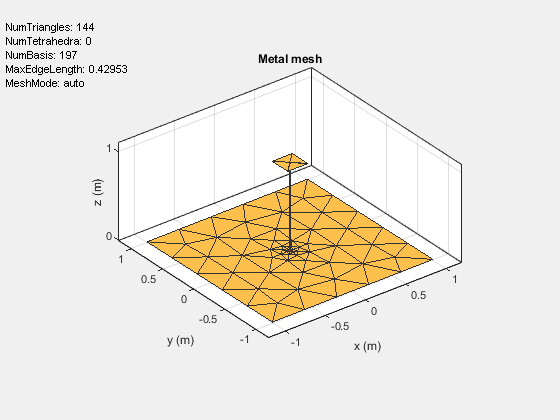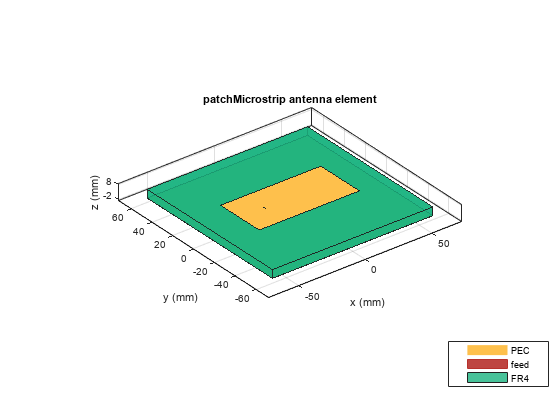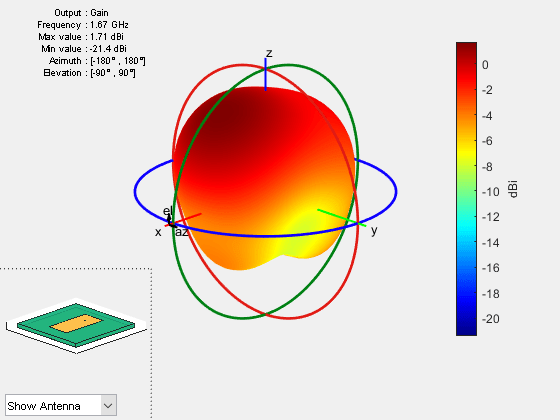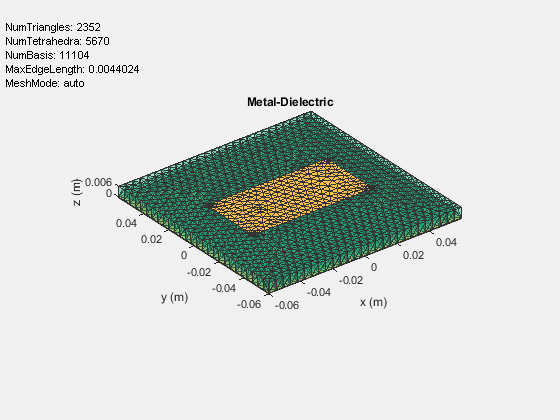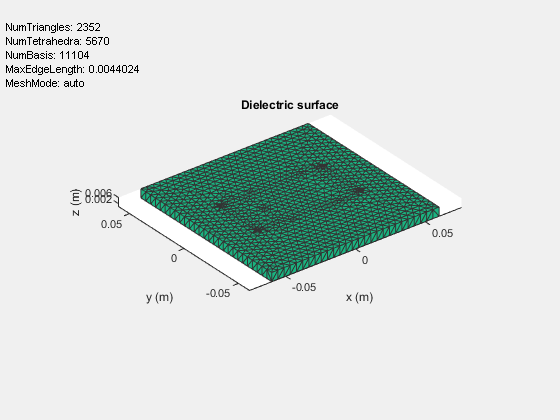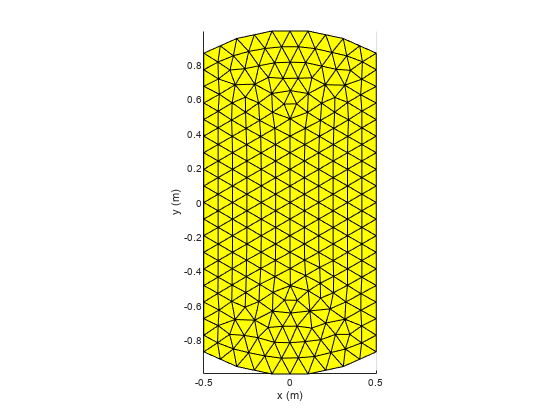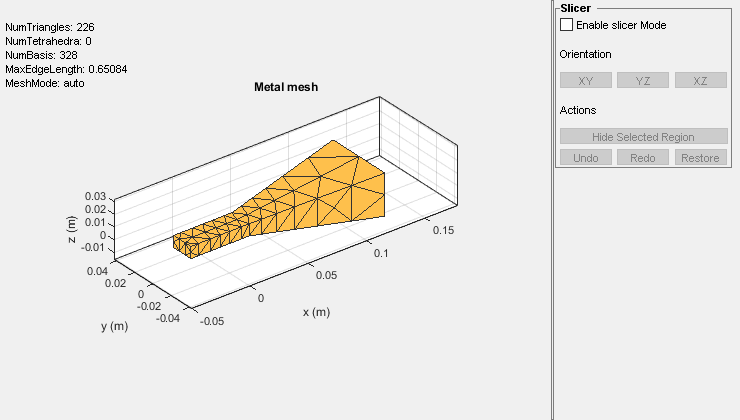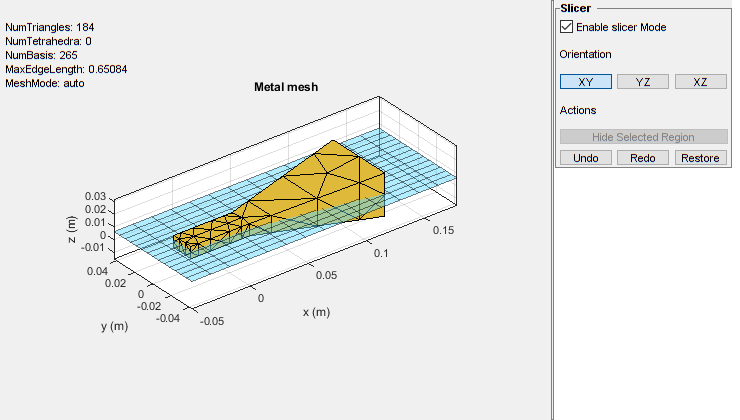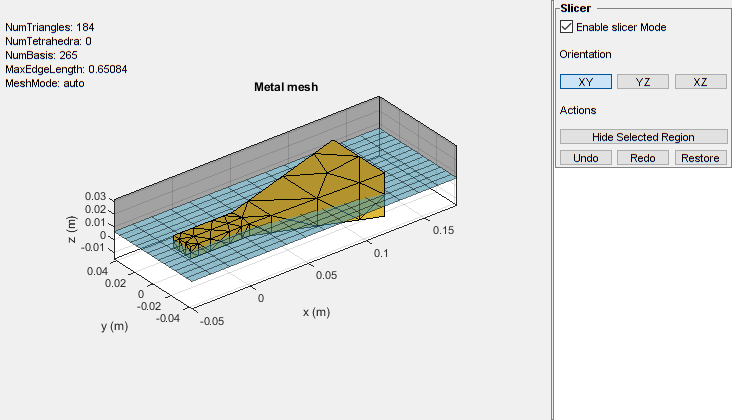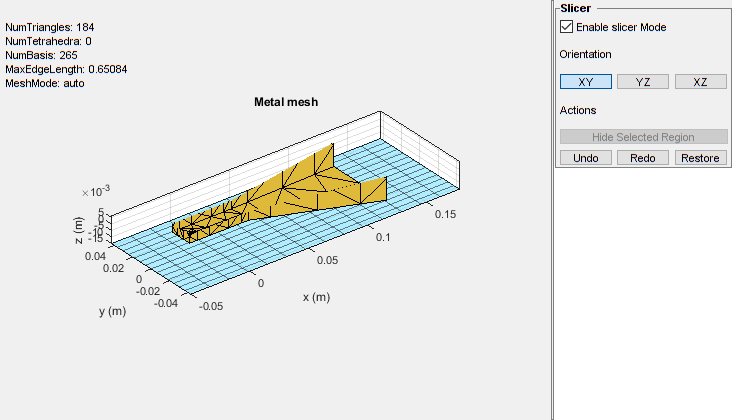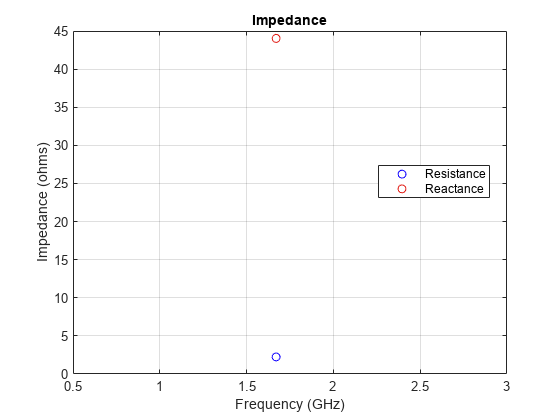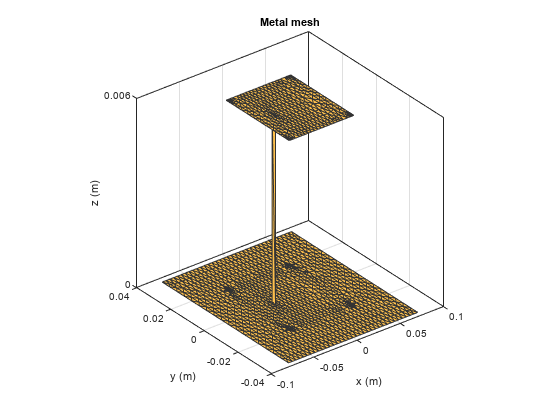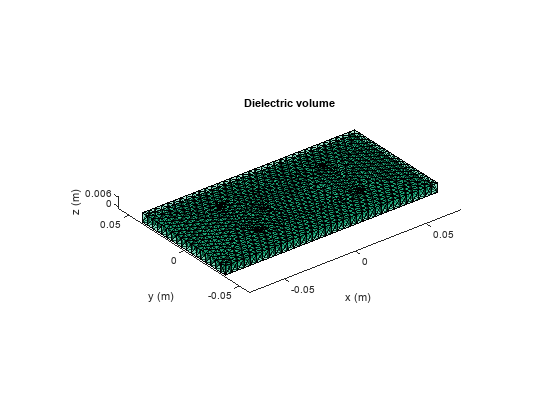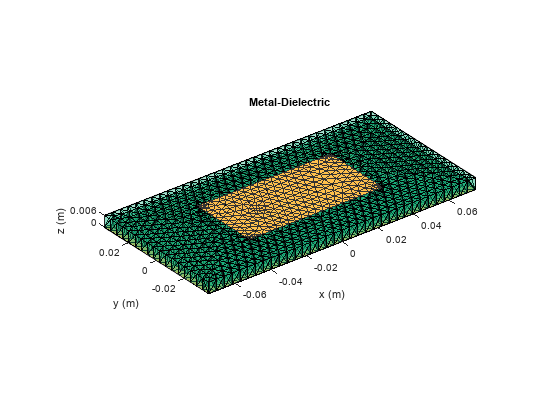mesh
Generate and view mesh for antennas, arrays, and custom shapes
Syntax
Description
mesh( opens a figure window
and displays an already meshed antenna, array, custom geometric shape, or a
platform. Here, the object)MeshMode is
"auto".
Running any analysis function (impedance, current, charge, pattern etc.) on the antenna or array automatically generates the mesh which you can then view using this syntax.
mesh(
manually generates the mesh for an antenna, array, custom geometric shape, or a
platform using the specified maximum edge length and displays it in a figure
window. Here, the object,MaxEdgeLength=Value)MeshMode is "manual" and
you must specify the maximum edge length to generate and view the mesh.
mesh(___,
manually generates the mesh for the specified antenna, array, custom geometric
shape, or a platform using one or more name-value arguments and displays it
in a figure window.Name=Value)
mesh(
generates a plot of meshed geometric shape at the specified wavelength in
meters.shape,wavelength)
meshstruct = mesh(shape,wavelength)
Examples
Input Arguments
Name-Value Arguments
Output Arguments
Version History
Introduced in R2015a
